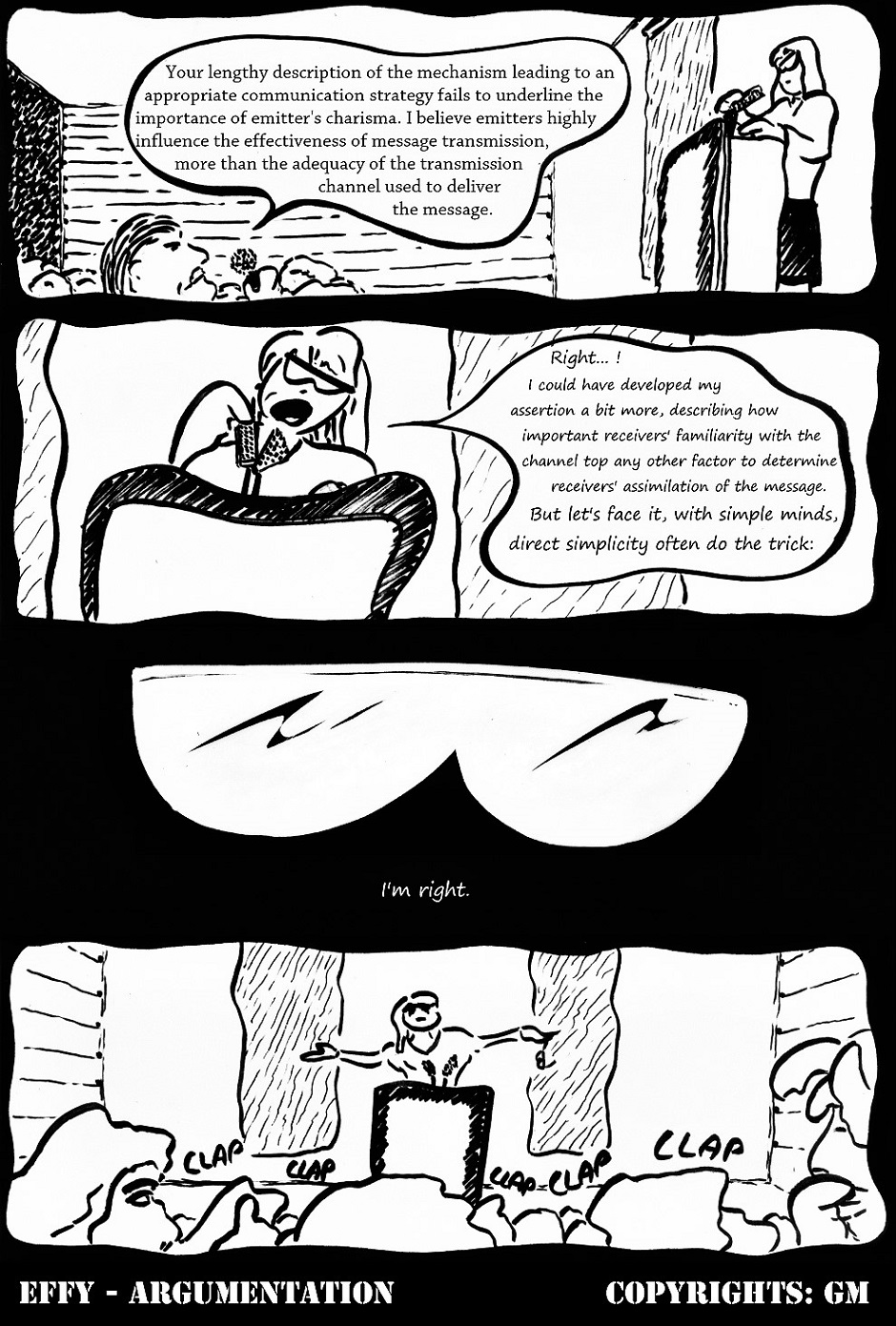Argumentation and persuasion was already a topic in Aristotle time, when they established the classic ethos, pathos & logos theory. Still greatly effective, this theory was conceived in an easier world, a world where the audience had a somewhat less diversified cultural background. Take ethos for example, finding a common vector of legitimacy for a group of local Greeks must have been easier than finding one for group of global partners attending a meeting virtually from around the world.
Markets differ, but what remain is that businesses must convince to be successful; managers must convince staff to earn their badge of leadership; people must convince their entourage to get the upper edge on dinner’s menu, and do on. So, with globalization and digitization, persuasion gets more complex and challenging, though all the more crucial to get a competitive advantage.
Some would limit the scope of their public; adapting the message to fully convince a narrow yet targeted audience, for which Aristotle principles would be easier to apply. Some would try to simplify the message; reaching out to a wider audience they could partially convince. And finally, we can’t forget a last group, the one who understood the economical potential that a complex process generate. That group developed countless strategies and principles to prey on our quest of mastering the art of persuasion. Example you ask? Just type “how to persuade” in your browser and you will probably find numerous books, trainings and principles (often contradicting themselves), with a hefty price tag. That being said, all these new principles do bring additional insight you can use on your daily approach of persuasion, and some good material could include:
- Forbes’ 21 principles of persuasion.
- Argumenter pour mieux convaincre (in french).
Effy relies on simplicity… merging ethos, pathos and logos in one single sentence, carrying all its weight across: “She’s right!”. Pun aside, from personal experience such technique has been surprisingly efficient when facing public with large socio-cultural differences…
Constructive comments welcome.
G.M.


[…] 06 – Effy Argumentation […]
[…] from the marketing mix in “P is for Pity” and from persuasion technique in “Effy Argumentation“, Effy now tackles […]
[…] Similar yet quite different from argumentation… So here’s an abstract animated illustration to highlight Effy’s multiple tools and […]
[…] but they can also serve to sell ideas or opinions. As such, they are very important for argumentation or persuasion as […]